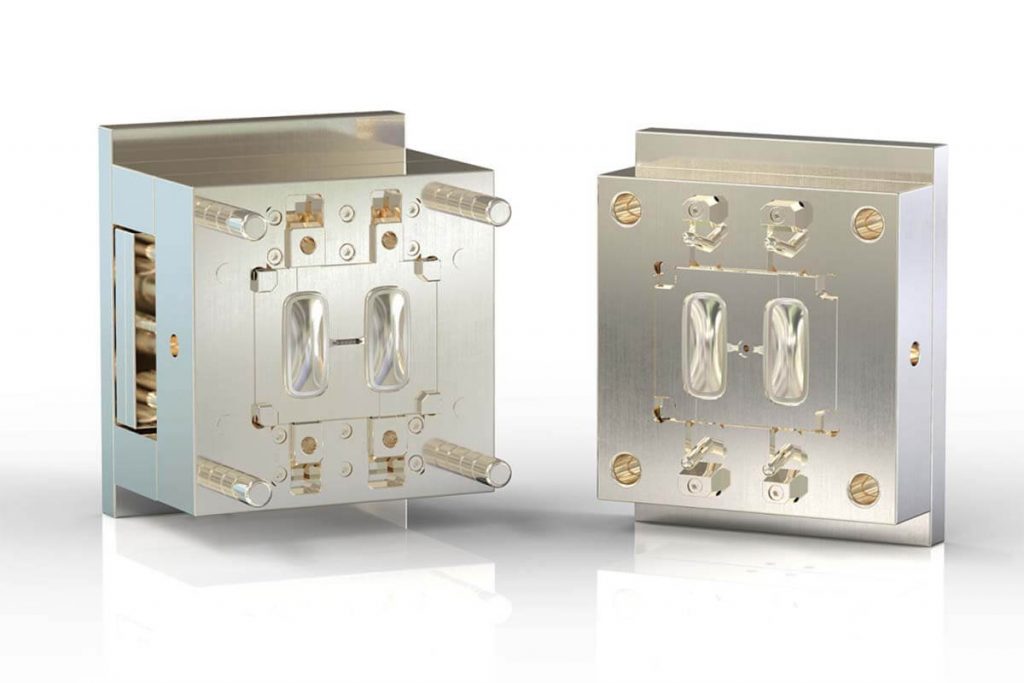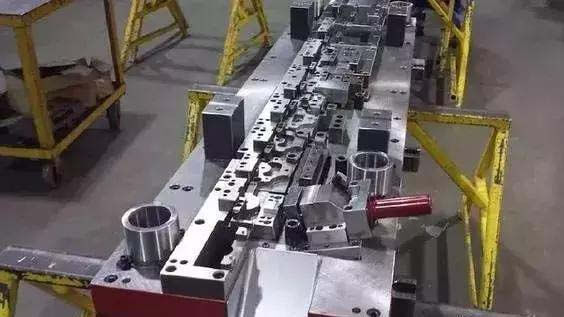
The main purpose of this 9 Common Injection Molding Problems and Solutions article is to discuss the causes of 9 common injection molding problems and how to solve them.
Injection molding problems and solutions 1. Difficult gate release
During the injection molding process, the sprue sticks in the sprue bushing and does not come off easily. When the mold is opened, the finished product shows cracking damage. In addition, it is necessary for the operator to knock out from the nozzle with a copper rod top to loosen it before it can be taken off the mold, which seriously affects the production power.
The primary element of this shortcoming is the poor brightness of the conical hole of the sprue and the knife marks in the circumference of the inner hole. The second is that the material is too soft, the small end of the cone hole is deformed or damaged after a period of time, and the curvature of the nozzle sphere is too small, resulting in the rivet head of the sprue material here.
The tapered hole of the sprue is difficult to process, so standard parts should be used as far as possible, or if you need to process it yourself, you should buy a special reamer. The tapered hole must be ground to Ra0.4 or more. In addition, it is necessary to set up a sprue pin sprue ejector.
Injection molding problems and solutions 2. Large molds with mold deflection
Large molds are subjected to different charging rates in all directions and to the influence of the weight of the mold when it is installed.
In the above-mentioned cases, the lateral offset force will be added to the guide pin when the needle is punched, and when the mold is opened, the exterior of the guide pin will be stretched and damaged, and in severe cases, the guide pin will be bent or blocked, and even the mold cannot be opened.
In order to deal with the above problems, in the mold parting surface to set up a high-strength positioning key on each of the four sides, the most simple and useful is the use of cylindrical keys.
The straightness of the guide pin hole and the parting surface is of paramount importance, in the processing is the choice of moving, fixed die alignment after clamping, boring in a boring machine, so as to ensure that the concentricity of the moving, fixed die hole, and make the straightness of the minimum error.
In addition, the heat treatment hardness of the guide pin and guide bush must reach the program requirements.
Injection molding problems and solutions 3. Guide pin damage
The guide pin plays a primary role in the mold as a guide to ensure that the core and cavity-forming surfaces do not touch each other under any circumstances, and cannot be used as a force or positioning piece.
In several cases, endless lateral deflection forces will occur in the moving and fixed molds during pinning. When the wall thickness of the plastic part is not uniform, the material flows through the thick wall at a large rate, where a large pressure occurs.
The side of the plastic part is not symmetrical, such as the step-shaped parting surface of the mold opposite the two sides of the counter pressure is not equal.
Injection molding problems and solutions 4. Dynamic mold curvature
When the mold is punched, the molten plastic in the mold cavity is subjected to an infinite backpressure, usually in the range of 600 to 1000 kg/cm.
Mold makers sometimes do not pay attention to this problem, usually change the original program standard, or perhaps replace the dynamic template with low-strength steel plate, in the mold with the top bar top material, due to the two sides of the seat span distance, constituting a needle when the template down bending.
Therefore, it is necessary to use excellent steel for the moving formwork, to have a sufficient thickness, not to use A3 and another low-strength steel pla, when necessary, should be set up under the moving formwork support column or support block, in order to reduce the thickness of the formwork, to advance the bearing capacity.

Injection molding problems and solutions 5. The top bar bending, cracking, or leakage of materials
The quality of the top bar is good, but the cost of processing is too high, and nowadays it is usually made of standard parts, which are of poor quality.
The gap between the top bar and the hole is assumed to be too large, then the material leakage, but the gap is assumed to be too small, due to the increase in the mold temperature when the needle is punched, the top bar expands and jammed.
The riskier is that sometimes the top bar is jacked out of the usual interval on the top and can not be broken, the role of a mold is when this section of the exposed top bar can not be reset and hit the concave mold.
In order to deal with this problem, the top bar is resharpened from scratch, saving 10-15 mm of the collaborative section at the front of the top bar, with some grinding of 0.2 mm at the base.
For the top bar in the installation, it is necessary to strictly check the collaboration gap, usually in 0.05 ~ 0.08 mm, to ensure that all the ejector arrangements can enter and exit freely.
Injection molding problems and solutions 6. Poor cooling or water leakage
The cooling effect of the mold directly affects the quality of the finished product and production power, such as poor cooling, the finished product being shortened, or shortened unevenly, and presenting warped surface deformation and other shortcomings.
On the other hand, all or some of the molds are overheated, so that the molds cannot be shaped normally and stop production, and in severe cases, the top bar and other moving parts are damaged by thermal expansion.
Cooling system program, processing to commodity shape, do not due to the mold structure or processing difficulties and omit this system, the especially large and medium-sized mold must be s adequate consideration of cooling problems.
Injection molding problems and solutions 7. Slider tilt, reset is not smooth
Some molds are bound by the area of the template, the length of the guide slot is too small, and the slider in the core action after the end of the exposed guide slot outside, so in the core after the period and the mold reset period briefly constitutes the slider tilt, especially in the mold, the slider reset is not smooth, so that the slider damage, and even bending damage.
According to experience, the slider end of the core action, the length of the slide should not be less than 2/3 of the full length of the guide slot.
Injection molding problems and solutions 8. Fixed distance tensioning arrangement failure
The hooks, buckles, and other fixed distance tensioning arrangements are usually used in fixed mold cores or some secondary demolding molds, as these arrangements are set up in pairs on both sides of the mold, their actions must be synchronized, i.e. the mold is closed together with the buckles, and the mold is opened to a certain position together with the hooks.
Once the synchronization is lost, it must constitute a tilt and damage to the template of the drawn mold, the parts of these arrangements should have high rigidity and wear resistance, and the adjustment is also very difficult, the life span of the arrangement is short, try to prevent the use of, can use other arrangements instead.
In the case of a relatively small extraction force can be used to push out the fixed die method, and in the case of a relatively large extraction force can be used when the dynamic die retreat core sliding, the first end of the extraction action and then the structure of the mold, in large molds can be used on the hydraulic cylinder core extraction. Inclined pin slider type core extraction arrangement damage.
This arrangement is more often presented with shortcomings mostly processing is not in place as well as with the material is too small, the first two questions are as follows:
The benefit of a large inclination angle A of the slanted pin is that a large core extraction distance can occur within a short opening stroke. However, if the angle of inclination A is too large when the extraction force F is a certain value, the bending force P=F/COSA in the core extraction process will be greater, and the pin will be easily deformed and the hole will be worn.
The greater the upward thrust of the pin on the slider N=FTGA, the greater the force increases the positive pressure of the slider on the guiding surface in the guide groove and then increases the resistance of the slider when sliding. Easy to constitute the sliding is not smooth, guide groove wear. According to experience, the angle of inclination A should not be greater than 25.
Injection molding problems and solutions 9. Injection molds in the exhaust are not smooth
There is often gas in the injection mold, why?
The air in the casting system and the mold cavity; some materials are rich in water that has not been dried and swept away, they will vaporize into water vapor at high temperatures.
Due to the high temperature in injection molding, some unstable plastics will be differentiated and gas will occur; some additives in the plastic material vaporization or chemical reaction with each other to generate the gas.
As with the reasons for poor exhaust, it is also necessary to find out quickly. The poor exhaust of the injection mold will bring a series of damage to the quality of the plastic parts and many other aspects, the primary embodiment of:
In the injection process, the melt will replace the gas in the cavity, assuming that the gas is not discharged in time will constitute a difficult melt filling, resulting in a shortage of shots and can not fill the cavity.
Poorly removed gas collar will constitute a high pressure in the cavity, and a certain degree of constriction into the internal plastic, constituting a flood, porosity, arrangement of thin and silver lines, and other quality shortcomings.
As the gas is highly constricted, the temperature in the cavity rises sharply, resulting in the surrounding melt differentiation, and baking, so that the plastic parts show some carbonization and scorching scene.
It is mainly present in the merging of the two melt streams, the gate flange; gas removal is not smooth, so the melt into the cavity speed is not the same, and therefore easy to constitute the activity of the marks and fusion marks, and make the mechanical function of the plastic parts decline; due to the obstruction of the gas in the cavity, will reduce the filling speed, affect the molding cycle, reduce the taxing power.
The air bubble in the plastic part is scattered, and the air bubble in the cavity is often scattered in the part opposite to the gate; the bubble in the plastic material is scattered along the thickness of the plastic part by differentiation or chemical reaction; the bubble in the plastic material is scattered in the residual water gasification, and it is scattered in the whole plastic part irregularly.
Besides the 9 Common Injection Molding Problems and Solutions article, you may also be interested in the below articles.
Summary Of 50 Injection Mold Structure Operation Dynamic Diagrams
What Is The Difference Between Two-Platen Mold And Three-Platen Mold?
